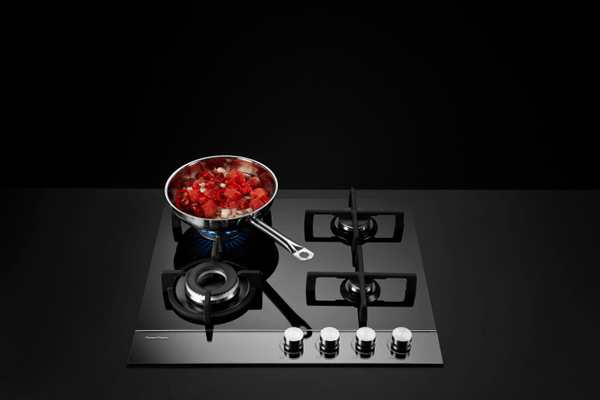A gas glass cooktop is a valuable kitchen appliance that can significantly contribute to the functionality of your kitchen. In comparison to other types of cooktops, the gas cooktop provides more accurate cooking temperature, even heat distribution and lower heat emissions. All these advantages enable faster and more convenient cooking. This is probably the reason why the gas glass cooktoop is the number one choice not only for numerous homeowners, but for many professionals chefs as well. It comes in a range of types, which makes the selection much easier. Of course, if familiar with the basics of this important kitchen appliance.

Parts of a Gas Glass Cooktop
- Burners – A typical gas glass cooktop consists of five burners. Four of the burners are placed on the stove top, while there is one burner located under the floor of the stove oven.
- Plot Light – This is a small gas burner that ignites the gas when the gas control is switched on. In some gas glass cooktop models there’s an electric ignition that ignites the flame by creating a flame spark.
- Valves – This is the part of the cooktop that controls the flow of the flame. The valve is controlled by a heavy-duty plastic knob, that has clear marks about the flame intensity engraved. When you turn the valve on, through the plastic knots the gas begins to flow into a venturi tube after which it is ignited by the plot light.
- Thermostat – The thermostat is the part that controls the temperature for baking and broiling. It has sensors placed inside the oven which sense the temperature and adjust the flow of the gas in order to retain the optimum temperature.
- Control Panel – It consists of plastic knobs for controlling the gas flow in the valve. The number of knobs depends on the number of burners the gas cooktoop has. Also, most models come with other controls included, such as: a clock, automatic oven timer, oven light switch and even switch for self-cleaning.
How Does A Gas Glass Cooktop Work?
- Fueling the Stove – A gas glass cooktop is powered by a natural gas line. The gas stove is connected to the gas line through several special pipes in which the gas is pressurized. When you turn the stove on, the gas begins to flow through the pipes and reaches to the burners.
- Igniting the Fuel – On its way to the burners, the gas flowing in the pipes at certain point comes in touch with air. After that, the gas gets pressurized into a smaller pipe (a small branch of the main gas stove pipe). This pipe transfers the gas to the ignition source which lights the gas.
- Heating the Burners – After the ignition of the gas in the small pipe, the flame that is created gets transferred to the main stove pipe. From the main stove pipe of the gas glass stove the flaming gas travels to the burner base after which the gas flame is emitted through the burners.
























